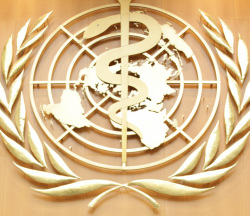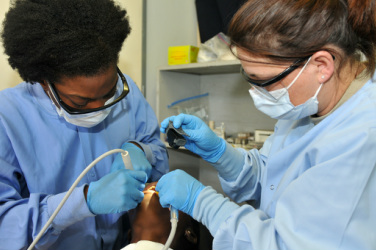Acupuncture for Pain Management Memphis
 World Health Organization (WHO)
World Health Organization (WHO)
According to an official report of World Health Organization (WHO), the effectiveness of acupuncture in pain management has already been established in controlled clinical studies, and its effective rate in the
treatment of chronic pain is comparable with that of morphine. Because of the side-effects of long-term drug therapy for pain and the risks of dependence, acupuncture is being increasingly regarded as the method of choice for treating many chronically painful conditions, including low back pain, neck pain, migraine, knee pain, sciatica, tennis elbow, shoulder pain, and tooth pain.
The excellent pain-killing effects of acupuncture have stimulated research on pain. Over the past few decades, many different mechanisms have been proposed to explain how acupuncture might work in analgesia. A recent theory states that the injury current due to acupuncture at an acupoint may trigger electromagnetic inductive effects so that the impedances of correlated neurovascular bundles are drastically changed. If the impedance of the meridian hugely mismatches with that of the brain after acupuncture, then the traveling wave of pain signal will be largely reflected back and only partially transmitted to the brain, hence pain relief can be achieved. If the impedance of the meridian entirely matches that of the pain source after acupuncture, then the pain source would appear to be nonexistent to the brain, hence analgesia can be achieved.
treatment of chronic pain is comparable with that of morphine. Because of the side-effects of long-term drug therapy for pain and the risks of dependence, acupuncture is being increasingly regarded as the method of choice for treating many chronically painful conditions, including low back pain, neck pain, migraine, knee pain, sciatica, tennis elbow, shoulder pain, and tooth pain.
The excellent pain-killing effects of acupuncture have stimulated research on pain. Over the past few decades, many different mechanisms have been proposed to explain how acupuncture might work in analgesia. A recent theory states that the injury current due to acupuncture at an acupoint may trigger electromagnetic inductive effects so that the impedances of correlated neurovascular bundles are drastically changed. If the impedance of the meridian hugely mismatches with that of the brain after acupuncture, then the traveling wave of pain signal will be largely reflected back and only partially transmitted to the brain, hence pain relief can be achieved. If the impedance of the meridian entirely matches that of the pain source after acupuncture, then the pain source would appear to be nonexistent to the brain, hence analgesia can be achieved.
Acupuncture for Low Back Pain
Acupuncture is one of the top priorities for patients with low back pain in the United States. In a 2009 study of 638 adults with chronic low back pain, participants undergoing 10 acupuncture sessions (administered over the course of seven weeks) had greater improvements in symptoms and dysfunction than those who received standard care.
Although many people find acupuncture helpful for easing their pain, some folks may not get any benefits from it. That is why the topic of acupuncture for low back pain has been long controversial. In practice, the success rate of acupuncture for back pain is about 80%.
In fact, acupuncturists have a simple way to tell the patients if he or she can benefit from acupuncture treatment. When performing acupuncture, the acupuncturist inserts a thin needle into a specific point of the body and manipulates it in different directions. Then the patient will be asked to describe the sensation associated with the manipulation. All sensations can be divided into two major categories: acute pain and deqi. Sensations like burning, hot, hurting, pinching, pricking, sharp, shocking, stinging, and tender belong to the acute pain category. Common sensations in the deqi category consist of aching, pressure, tingling, numb, dull, and throbbing. People who experience only acute pain sensations will generally show little or none improvement with acupuncture, while those who experience deqi sensations will generally show favorable responses after treatments.
Deqi is regarded as an essential prerequisite for effective acupuncture in traditional Chinese medicine. Modern scientific studies have shown that the deqi sensations involve stimulation of vessels, nerves, muscles, tendons, and periosteal as well as transportation of signals through different nerve fiber systems. Using functional magnetic resonance imaging technology, a group of UK researchers have found that acupuncture deqi is associated with two major activities of the brain: suppression of the emotion regulatory system, and stimulation of the feeling transmission system.
The philosophy of TCM is totally different from Western medicine. In TCM, the human body is made up of certain important conduits of energy, what are called meridians. Acupuncture points are located in the meridians and act as sensors and regulators of the body, mind and soul. As such, when there are blockages in these conduits, the result is disharmony. In essence, acupuncture help unblock these areas to help this flow of energy or Qi again. As for low back pain, it is classified using two different frameworks:
Accordingly, personalized protocols are recommended for the treatment of different patterns of low back pain. For example, Weizhong (BL40) and Kunlun (BL60) are used to treat Zutaiyang meridian pattern of low back pain, while Zusanli (ST36), Shangjuxu (ST37), and Xiajuxu (ST39) are used to treat Zuyangmin meridian pattern of back pain.
If you don’t have the nerves of steel needles, but would like to get acupuncture benefits, chances are not slim. There are several non-needle alternative ways of acupuncture as follows:
Although many people find acupuncture helpful for easing their pain, some folks may not get any benefits from it. That is why the topic of acupuncture for low back pain has been long controversial. In practice, the success rate of acupuncture for back pain is about 80%.
In fact, acupuncturists have a simple way to tell the patients if he or she can benefit from acupuncture treatment. When performing acupuncture, the acupuncturist inserts a thin needle into a specific point of the body and manipulates it in different directions. Then the patient will be asked to describe the sensation associated with the manipulation. All sensations can be divided into two major categories: acute pain and deqi. Sensations like burning, hot, hurting, pinching, pricking, sharp, shocking, stinging, and tender belong to the acute pain category. Common sensations in the deqi category consist of aching, pressure, tingling, numb, dull, and throbbing. People who experience only acute pain sensations will generally show little or none improvement with acupuncture, while those who experience deqi sensations will generally show favorable responses after treatments.
Deqi is regarded as an essential prerequisite for effective acupuncture in traditional Chinese medicine. Modern scientific studies have shown that the deqi sensations involve stimulation of vessels, nerves, muscles, tendons, and periosteal as well as transportation of signals through different nerve fiber systems. Using functional magnetic resonance imaging technology, a group of UK researchers have found that acupuncture deqi is associated with two major activities of the brain: suppression of the emotion regulatory system, and stimulation of the feeling transmission system.
The philosophy of TCM is totally different from Western medicine. In TCM, the human body is made up of certain important conduits of energy, what are called meridians. Acupuncture points are located in the meridians and act as sensors and regulators of the body, mind and soul. As such, when there are blockages in these conduits, the result is disharmony. In essence, acupuncture help unblock these areas to help this flow of energy or Qi again. As for low back pain, it is classified using two different frameworks:
- Meridian-based framework: low back pain is classified into 6 major patterns based on the areas involved, including Zutaiyin, Zushaoyin, Zujueyin, Zutaiyang, Zuyangming, and Zuyangming. This framework is more suitable for acupuncturists.
- Cause-based framework: low back pain is divided into 4 major patterns based on the causes or pathological events, including Cold-Dampness, Dampness-Heat, Blood-Stasis, and Kidney-deficiency. This framework is more suitable for herbalists.
Accordingly, personalized protocols are recommended for the treatment of different patterns of low back pain. For example, Weizhong (BL40) and Kunlun (BL60) are used to treat Zutaiyang meridian pattern of low back pain, while Zusanli (ST36), Shangjuxu (ST37), and Xiajuxu (ST39) are used to treat Zuyangmin meridian pattern of back pain.
If you don’t have the nerves of steel needles, but would like to get acupuncture benefits, chances are not slim. There are several non-needle alternative ways of acupuncture as follows:
- Moxibustion: This therapy uses moxa, which is made from dried mugwort, to warm acupuncture points with the intention of stimulating energy flow. Sometimes it may be as effective as needle acupuncture.
- Acupressure: Acupressure is a healing practice that uses pressure to stimulate your own body's healing capacity. Certain locations on the hands (Hegu, LI4), arms (Quchi, LI11) and feet (Taichong, LV3) can be pressed to bring pain relief. Studies have even shown that for some people acupressure reduces pain more than physical therapy.
- Laser acupuncture: This low-level laser therapy uses a light source that generates pure light of a single wavelength with non-thermal effects on acupuncture points to stimulate energy flow. Research studies have indicated laser therapy can help accelerate natural healing of wounds, pain, and inflammation. Laser therapy has been used in Europe and Asia since the 1970s. Laser therapy received US FDA approval in 2001.
- Electronic acupuncture: This is an innovative technique of using minute electronic pulses to simulate natural healing of the body. Instead of having hair-thin needles placed into your flesh in various acupuncture points, a simple probe is rather used on the skin’s surface. The electronic acupuncture equipment generates a series of pulses transmitted through the skin and into affected or damaged cells. Moreover, the electronic acupuncture device is not only designed to treating classic acupuncture points, but most essentially works on the precise and swift locating of new treatment points.
- Tapping acupuncture: An interesting technique, named EFT (emotional freedom techniques) was developed by Gary Craig to allow quick release of negative emotions and pain by tapping on a specific set of points in the body. This is an easy and effective therapy for stress-associated pain.
If you want to find quality acupuncture for pain management in Memphis, please call us by calling 901-428-6689.


